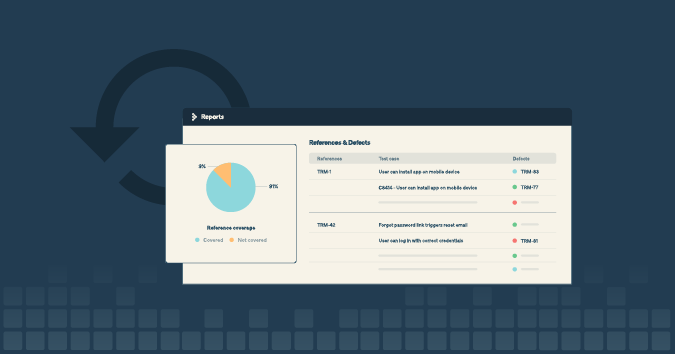This is a guest post by Raj Subrameyer
Software processes have evolved drastically in the past several decades. One of the major highlights of this transition is how organizations have shifted from the waterfall model to an agile model to speed up the development process and deliver high-quality features to the customers.
A byproduct of teams following agile is the introduction of new processes that quickly became common standards in our development, testing, and release processes, such as shift-left testing, continuous testing, DevOps, and CI/CD. All these practices helped teams achieve quick and frequent releases.
But there was one glaring gap in all of these practices: the lack of focus on performing testing throughout the software delivery pipeline. Thus, the introduction of DevTestOps.
What is DevTestOps?
While the goal of DevOps is to increase the collaboration between developers and the operations team, the goal of DevTestOps is to include continuous testing in the DevOps process. This means more focus is placed on starting testing right from the requirements phase and continuing it through the production and monitoring phase.
DevTestOps includes testing as often as possible and automating redundant processes in order to save time for developers, testers, operations, and other team members. It also means shifting integration testing to the left, as there can be disruptive outcomes, significant defects, and delays in schedules when integration testing is performed later in the development process.
Because testing is performed by different team members at various development stages, another outcome of DevTestOps is that it helps to build awareness that quality is everyone’s responsibility.
How will DevTestOps help your team?
There are various reasons why software teams should adopt DevTestOps. Here are the top five.
1. It increases quality
Since testing is done as early and as often as possible, bugs are found fast and fixed faster in each stage of the development process. The amount of time it takes to find a bug, fix it and test it, is drastically reduced following this approach as developers, testers and the operations team work closely together.
2. It accelerates collaboration
For this approach to be effective, different roles in teams must work together as one single unit. There is constant communication to ensure the features work as expected.
3. There’s more focus on automation
In a DevTestOps approach, every process that can be automated to save time is automated. This may take considerable time to set up, but once done correctly, it helps to drastically reduce the manual effort needed for performing time-consuming processes, deploying builds to different environments, ensuring new features do not break existing ones, and much more.
4. You get faster feedback
In each step of the process, teams get continuous feedback about the features by using the various processes, tools, and communication channels that are needed for a successful DevTestOps implementation.
5. Testers are more visible
One of the common problems we have seen historically in teams is testers not getting involved in all the activities in the development process. They tend not to have equal ownership of the product with developers. But with DevTestOps, testers are involved in each stage of the delivery pipeline. They give valuable feedback to developers and the operations team at every point.
Implementing DevTestOps
Since DevTestOps is DevOps plus continuous testing, many tools and practices that apply to both are relevant to DevTestOps as well.
Have the right tools and frameworks
Teams have to use the right tools and frameworks in each phase of the delivery pipeline. This will help in improving software quality and speed of delivery.
Some of these tools include TestRail, Travis CI, Travis Insights, Kiuwan, Cucumber, LaunchDarkly, Assembla, Xray, Git, TFS, Docker and Kubernetes.
Automate as much as possible
One of the key factors that will help in successful DevTestOps implementation is to automate as many processes as possible, so you can save time and get faster feedback. This may include automating build deployments, having automated tests running in different phases of the development process, using an automated rollback mechanism when there are problems in production, and much more.
Continuously monitor the pipeline
A DevTestOps pipeline includes development, testing, deployment of the feature, and measuring various facets of the app in production. It’s important to monitor this pipeline in order to troubleshoot problems as quickly as possible when there are failures and to avoid unnecessary delays.
Put more focus on observability
The three main components of observability are traces, logs, and metrics. As the systems become more complex with technologies like blockchain, microservices, and machine learning, gathering different information about the system will help you proactively predict and fix problems.
Support change in culture
Establishing a successful DevTestOps pipeline relies on various factors. Individuals on the team should understand that it will involve considerable effort, time, and cost at the beginning to set up the pipeline. But, once implemented correctly, the ROI outweighs the initial setup costs.
Everyone also needs to understand that different roles on the team, such as project managers, developers, testers, business analysts, and operations specialists, will have to work together to speed up the delivery process. This may not come naturally at first, but if everybody puts in the effort, they’ll eventually wonder how they ever used to work without the collaboration.
DevTestOps requires increased collaboration, transparency, and trust. If an organization does not already have these qualities, then stakeholders and upper management must instill these qualities within teams. Any communication barriers have to be eliminated, and there should be more encouragement to form self-organizing and cross-functional teams. Check out this post on how to increase collaboration, transparency, and trust in your organization.



